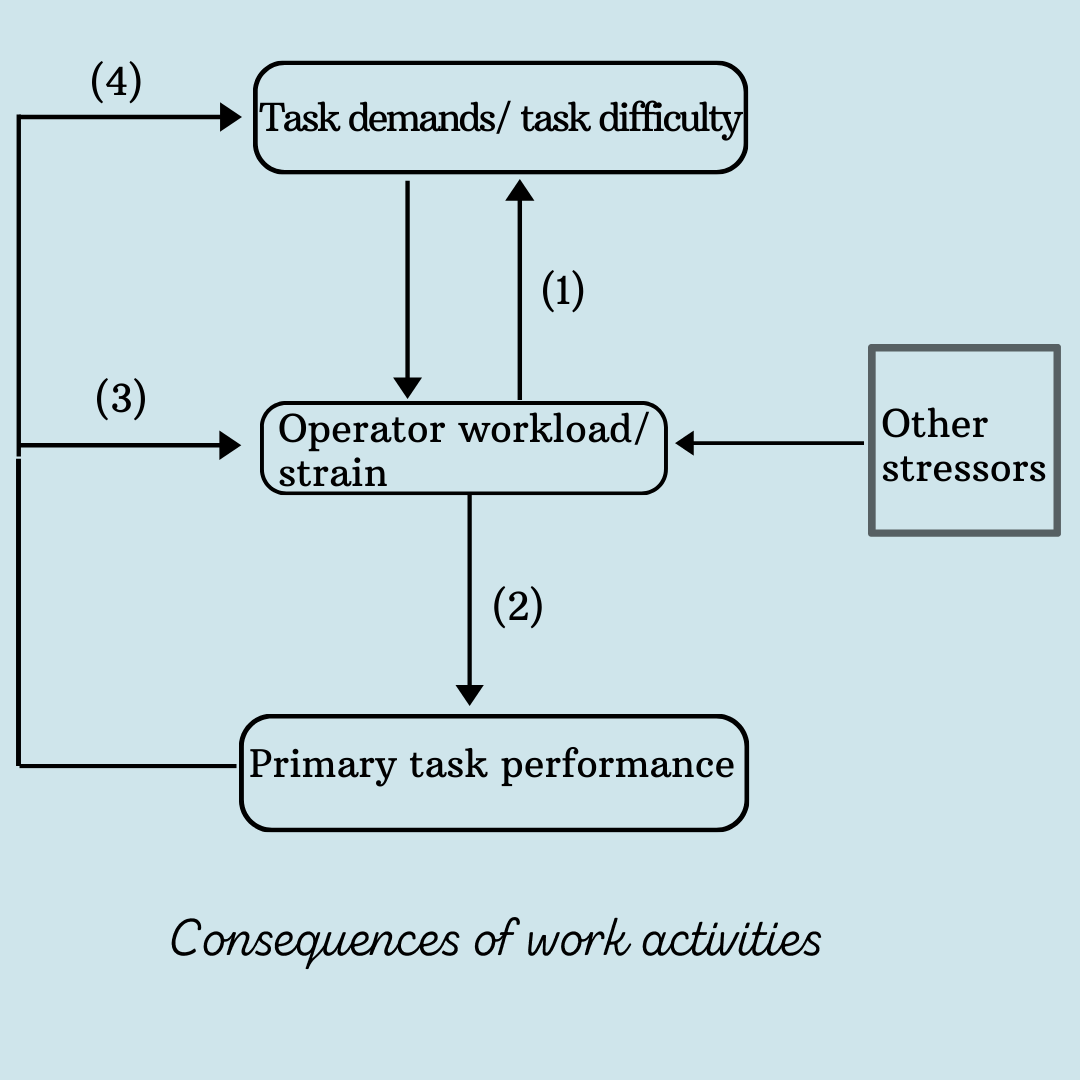Mental Workload: Its Foundation and Measurement
May 28, 2021
Measures of mental workload are used to determine the sources of error and enhance work performance. From reviewing industry trends and chatting with industry experts it seems to be one of the services of the future for ergonomics, especially for those jobs that require a high mental workload. If you’re interested in adding this to your service deliverables, stick around. I’m going to give you the foundation of mental workload evaluation and the 3 well-established tools to use when measuring mental workload.
The Future Trend
It’s essential to stay on the ball with industry challenges and trends. Keeping up with the trends can help your business grow. Accordingly, many industry experts in Occupational Health and Safety are saying that mental workload is the future trend. For this reason, it would be a good thing to at least be aware of this as Ergonomics Professionals so that we can add value and steer our clients in the right direction.
But the question is, what makes it a future trend? Why assess mental workload?
You may have heard your friends and colleagues talk about mental workload related to work demands or working conditions. Most likely, it’s not just them. Over the years of doing ergonomics assessments, especially when I managed an in-house ergonomics program for a really large organization, I noticed a shift happening: more and more people were asking for resources to help with the strain and stress of the job.
It could be that an employer received a doctor's note from an employee with concerns regarding the workload of the job. Not only that, certain Workers Compensation Boards are now accepting claims related to work stress.
So now the question becomes: What types of services can we offer to employers to reduce the mental workload related to the job, at the same time, encourage them to continue to seek our help whenever they have ergonomics-related challenges? Well, that’s exactly what we’re going to discuss. I’m going to be setting the foundation for you so that you can have all the facts at your fingertips.
The Foundation
Research about workload in ergonomics has risen in popularity since the 1980s. Despite that, there’s no agreed-upon definition of mental workload. After careful consideration, the best way to explain this highly complex concept is to show you the framework for mental workload definition and evaluation. This framework was developed by Wilson & Corlett, referenced below if you want to learn more.

This graphic illustrates the following indicators of this framework:
- Task Demands / Task Difficulty,
- Operator Workload /Strain,
- Primary Task Performance, and
- Other Stressors.
At #1: The graphic shows that Task Demands / Difficulty and Operator Workload / Strain are inter-related: Task Demands can have an effect on the Operator Workload / Strain AND Operator Workload / Strain can have an effect on Task Demands / Difficulty. Other Stressors can impact (ie: related to environment) the Operator Workload / Strain at this level too.
At #2: The Emergence of the combined factors of Task Demands / Difficulty and Operator Workload / Strain brings about the Primary Performance of the Task.
At #3, #4: Typically, this is measured with the number of errors and the time it takes to complete the task. Although this is something that you (as the assessor) can measure, the operator is probably monitoring their own task performance. For example: how well they perceive performance is feeds back into the system of how difficult they perceive that task demand is AND how much workload or strain they're experiencing.
Measures of Mental Workload
There are many methods you can measure mental workload depending on the type of equipment that you have access to, the scope of the project, and the project budget! The three major types of mental workload measurements are performance-based, subjective, and physiological. In this post, I’m going to focus on subjective measures since this is the measurement tool that I’ve used in my past assessments and what I find to be reliable.
Subjective measures involve asking the workers about their own awareness of the cognitive effort needed to complete a task. These are low-cost and easy to administer. In addition, subjective measures have a high degree of face validity. What this means is that when someone tells you that they feel they have to put a lot of effort into it, then the experience reflects the execution of the process.
If you are interested in performing these types of evaluations, you need to know the three rating scales that have dominated the literature. The three well-established tools are the following:
- Cooper-Harper Rating Scale. This employs a single 10-point scale, each point having a verbal descriptor.
- National Aeronautical and Space Administration Task Load Index (NASA-TLX). Uses a multi-dimensional scale to measure operator task performance.
- Subjective Workload Assessment Technique (SWAT). Uses three scales designed to measure time load, mental effort load, and psychological stress load. .
Those are three widely used workload measurement tools that you may come across if you want to get into these types of assessments.
NASA-TLX
I want to highlight NASA-TLX because I've used this tool before and it has been valuable. NASA-TLX was developed by the Human Performance Group at NASA. This tool asks operators to make ratings on six subscales, which includes:
- Mental demand
- Physical demand
- Temporal Demand
- Performance
- Effort
- Frustration Level
Do Your Research
There you have it! I hope you find this post valuable. If you want to add this to your service offering, I do want to advise you to proceed with great caution. As an Ergonomics Professional you always want to add value to the organizations you work with.
Want to Add Industrial Ergo Expertise to Your Consulting Business?
In June 2021 I'm adding industrial ergonomic assessment tools, like the NASA TLX, to my program Accelerate. You can access them in the Accelerate program with supportive literature. All you have to do is sign up to the waitlist here so you can be the first to be notified when Accelerate opens for enrollment.
I’ll be opening the enrollment at the end of June 2021. Members of the Accelerate can get access to a new infographic every month that they can white label, as well as brand new literature reviews. On top of that, they have access to expert discussions about marketing and high-level ergonomics, and they get coaching and support from me. If you also want to get everything that the Accelerate program can bring, sign up and join our community.
Reference: Wilson, R. & Corlett, N. Evaluation of Humanwork, 3rd ed. Taylor & Francis, 2005.
